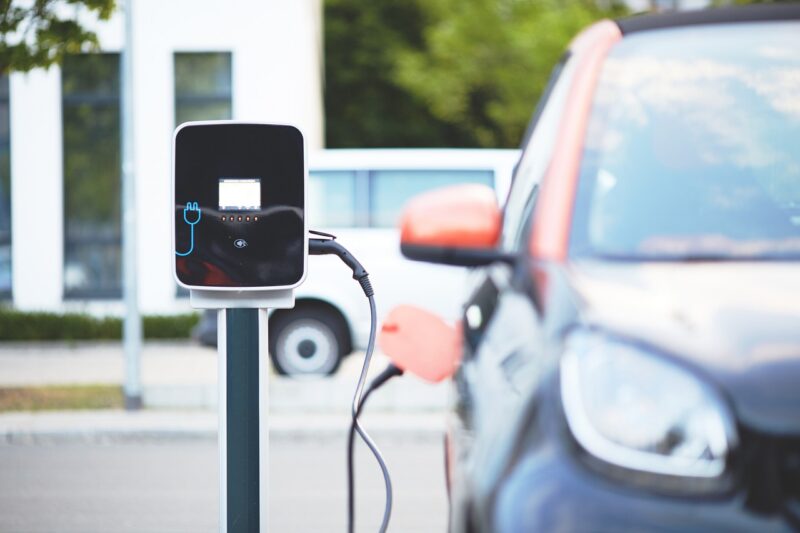From Horsepower to Electric Power: The Evolution of the Car Industry
November 18, 2024

The car industry has come a long way since the first steam-powered vehicles hit the roads in the late 18th century. Today, we find ourselves in the midst of a revolution that is transforming how we think about transportation. From the early days of horsepower to the modern electric vehicles (EVs) that are becoming increasingly popular, the evolution of the car industry is a testament to human innovation and technological advancement.
1. The Dawn of Automobiles
The concept of automated vehicles can be traced back to the 1769 development of a steam-powered tricycle by Nicolas-Joseph Cugnot. Although this early vehicle was not practical for mass use, it sparked an interest in mechanized transportation. As technology progressed, the late 19th century saw the emergence of gasoline-powered automobiles, with Karl Benz’s Patent Motorwagen being one of the first commercially available cars to incorporate an internal combustion engine.
The invention of the automobile changed society irrevocably, providing an unprecedented level of freedom and mobility. Roads and infrastructure had to adapt, leading to the creation of highways and maintenance of city streets. The car quickly transformed from a luxury item to a commonplace necessity, as more people discovered the benefits of the newfound independence that cars offered.
2. The Assembly Line Revolution
In the early 20th century, the American industrialist Henry Ford introduced the assembly line production technique, which revolutionized car manufacturing. The introduction of the Ford Model T in 1908 offered a reliable automobile at a price that average Americans could afford, thanks to the efficiencies gained through mass production.
The assembly line not only made cars cheaper but also changed the nature of work. Workers performed specific tasks in a sequence, allowing for rapid construction of vehicles. This method dramatically decreased the time it took to build a car, enabling manufacturers to scale production swiftly and meet growing demand. Ford’s techniques paved the way for other manufacturers and mass production became a staple in the industry.
3. The Post-War Boom and Global Expansion
The mid-20th century saw immense growth in the car industry, particularly after World War II. Soldiers returning from war had access to economic opportunities that led to increased consumerism and the desire for personal vehicles. Car manufacturers responded to this demand with innovative designs and the introduction of features that focused on comfort, performance, and aesthetics.
During this period, automotive giants like General Motors, Chrysler, and Ford dominated the industry in the United States, while European manufacturers like Volkswagen and BMW gained prominence. Japan also entered the stage with brands like Toyota and Honda, focusing on reliability and efficiency. The car became not just a mode of transportation but a symbol of status, freedom, and individuality.
4. Oil Crises and Environmental Awareness
The oil crises of the 1970s marked a significant turning point for the automotive industry. Fuel shortages and rising gas prices prompted consumers to reconsider their vehicles’ efficiency. This period also saw heightened awareness of environmental issues, leading to stricter regulations governing emissions and fuel economy.
Manufacturers began investing in research and development to create more fuel-efficient vehicles, resulting in the introduction of compact cars that utilized less fuel. This shift opened the door for innovations in hybrid technology, which combined traditional internal combustion engines with electric motors, causing a seismic shift in consumer expectations and demands for sustainability in transportation.
5. The Rise of Electric Vehicles
In the 21st century, the car industry is witnessing remarkable change as electric vehicles (EVs) gain popularity. Driven by advancements in battery technology, growing concerns over climate change, and governmental incentives for clean energy, consumers are increasingly turning to EVs as a viable alternative to traditional gasoline-powered cars.
Companies like Tesla have ushered in this new era with innovative designs, impressive range, and high-performance electric vehicles that appeal to consumers. Moreover, legacy automakers are investing heavily in electric technology, committing to electrify their fleets and transitioning towards sustainable practices.
Today’s car industry is not merely about transportation, but about revolutionizing the way we think about energy, sustainability, and the future of mobility. As we look ahead, developments in autonomous driving, smart technology, and the connectivity of vehicles promise to reshape our transportation landscape even further.
6. Conclusion: The Future of the Car Industry
The evolution of the car industry from horsepower to electric power showcases humanity’s relentless pursuit of innovation. As we face the challenges of climate change, urbanization, and technological advancement, the automotive industry will continue to adapt and evolve. The focus is now shifting towards developing electric, autonomous, and connected vehicles that can meet the needs of future generations without compromising on sustainability.
The road ahead is both exciting and uncertain, but if history is any indication, the car industry will rise to meet the challenges ahead, leading us into a new era of transportation that harmonizes with our environment and enhances our quality of life.






